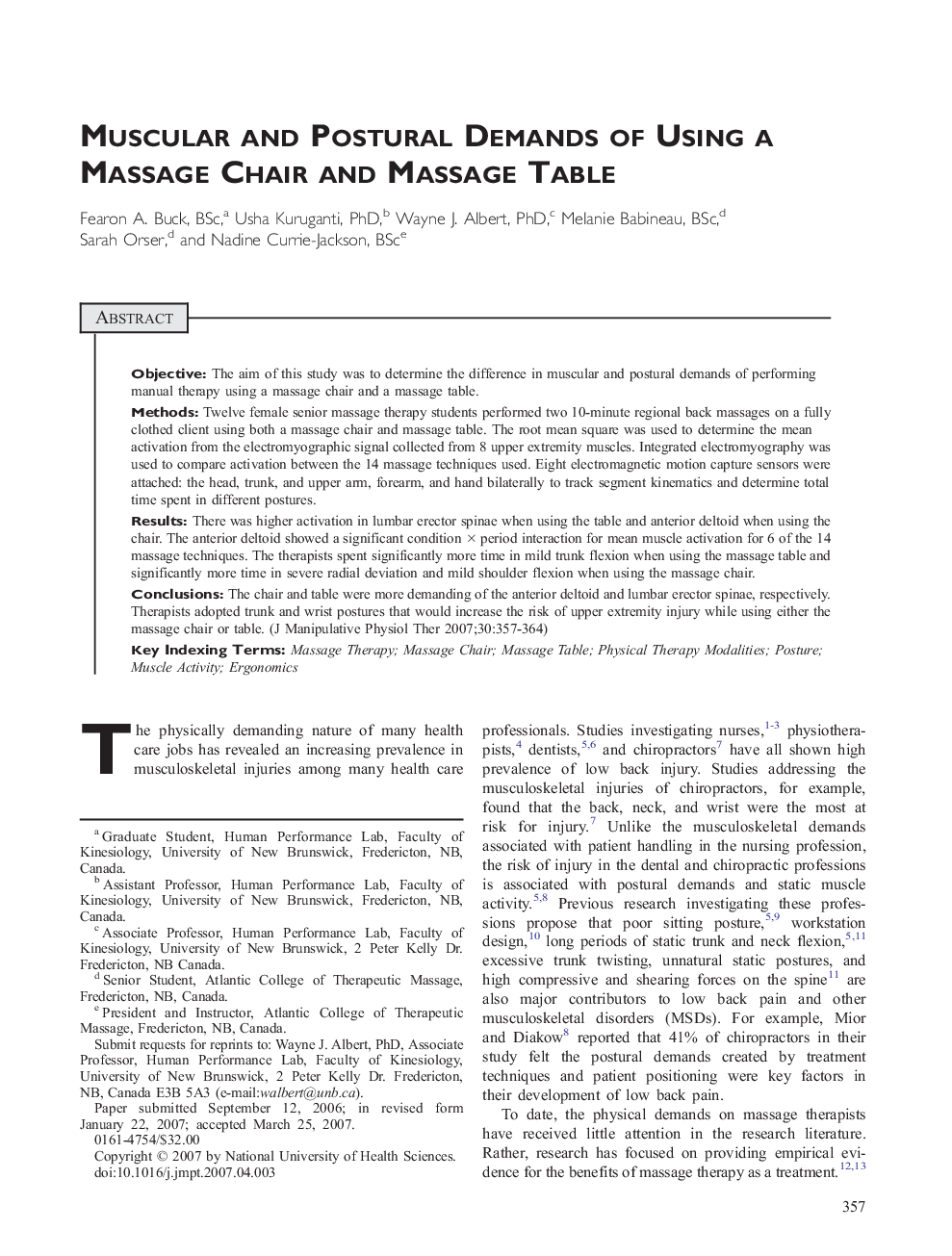| Article ID | Journal | Published Year | Pages | File Type |
|---|---|---|---|---|
| 2621385 | Journal of Manipulative and Physiological Therapeutics | 2007 | 8 Pages |
ObjectiveThe aim of this study was to determine the difference in muscular and postural demands of performing manual therapy using a massage chair and a massage table.MethodsTwelve female senior massage therapy students performed two 10-minute regional back massages on a fully clothed client using both a massage chair and massage table. The root mean square was used to determine the mean activation from the electromyographic signal collected from 8 upper extremity muscles. Integrated electromyography was used to compare activation between the 14 massage techniques used. Eight electromagnetic motion capture sensors were attached: the head, trunk, and upper arm, forearm, and hand bilaterally to track segment kinematics and determine total time spent in different postures.ResultsThere was higher activation in lumbar erector spinae when using the table and anterior deltoid when using the chair. The anterior deltoid showed a significant condition × period interaction for mean muscle activation for 6 of the 14 massage techniques. The therapists spent significantly more time in mild trunk flexion when using the massage table and significantly more time in severe radial deviation and mild shoulder flexion when using the massage chair.ConclusionsThe chair and table were more demanding of the anterior deltoid and lumbar erector spinae, respectively. Therapists adopted trunk and wrist postures that would increase the risk of upper extremity injury while using either the massage chair or table.
